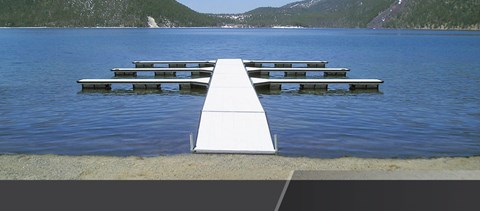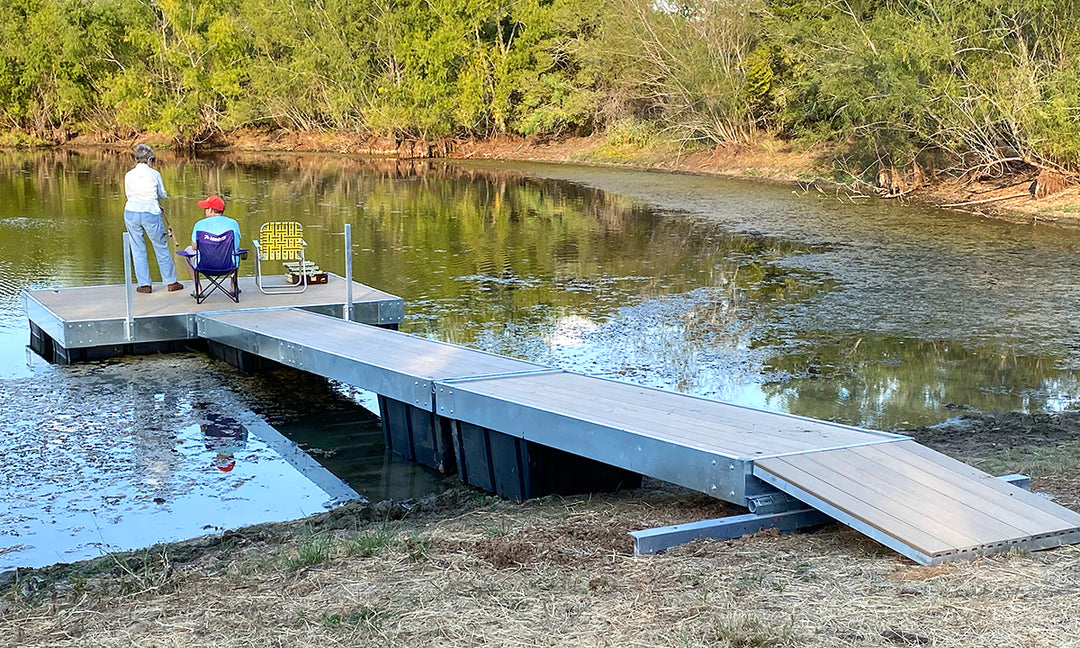Crafting Customized Solutions: Why a Floating Dock Builder is Vital for Special Demands
Crafting Customized Solutions: Why a Floating Dock Builder is Vital for Special Demands
Blog Article
Upgrade Your Waterside With Long Lasting Floating Docks
Updating your beachfront with long lasting floating docks can substantially enhance both capability and visual appeals, supplying a versatile option for numerous water activities. With a range of materials available, consisting of low-maintenance options and conventional wood, picking the ideal dock can complement your individual style and satisfy functional requirements.
Advantages of Floating Docks
Floating docks offer a plethora of advantages that boost their appeal for different maritime applications. Unlike typical set docks, floating docks surge and loss with the trend, making certain consistent availability for boats and watercraft no matter of ecological problems.
In addition, floating docks are less complicated to install and relocate, providing flexibility for short-term or seasonal usage. Their modular design enables customization to fit specific requirements, whether for personal marinas, property waterfronts, or industrial applications.
Moreover, floating docks produce very little disruption to the aquatic environment, maintaining neighborhood ecosystems and minimizing the chance of erosion. They also offer improved security and stability for users, as their buoyant nature supplies a more forgiving surface than rigid frameworks.
Moreover, floating docks can help with a diverse variety of tasks, such as angling, swimming, and entertainment boating, making them an important asset for waterside growth. Their adaptability and functionality make floating docks a preferred option for a variety of marine projects.
Choosing the Right Products
Selecting suitable products for floating docks is vital to their longevity, efficiency, and general performance. When picking products, think about aspects such as ecological exposure, maintenance demands, and architectural stability. Common products include wood, plastic, light weight aluminum, and composite alternatives, each offering distinct benefits and drawbacks.
Timber, while cosmetically pleasing, requires routine maintenance to avoid rot and degeneration. Pressure-treated timber can improve longevity, but it might still catch water damage in time. Plastic drifts, usually made from high-density polyethylene, are resistant to deterioration and require marginal maintenance, making them an appealing selection for low-maintenance applications.
Aluminum is an additional practical choice, understood for its strength and lightweight homes. It is resistant to rust and can stand up to severe weather, although it might be more expensive than other materials. Composite products integrate the ideal qualities of wood and plastic, offering a low-maintenance and durable option that resembles the look of timber without the associated drawbacks.
Eventually, the selection of material must straighten with the meant use, environmental factors to consider, and spending plan restrictions, making certain a functional and resilient floating dock that meets your particular demands.
Installment Process Overview
The effective installment of a floating dock relies upon mindful preparation and execution, making sure that it runs successfully in its designated atmosphere. The primary step entails evaluating website problems, including water depth, coastline features, and prevailing weather patterns, which will notify the dock design and anchoring system.
Adhering to the site evaluation, the next stage is to prepare the floating dock parts. This consists of putting together the frame, securing drifts, and affixing any required hardware. It is crucial to make certain that all connections are water-resistant and robust to endure marine conditions.
When the dock is assembled, the setup process starts with placing the dock in the water. This can include a crane or other training tools, specifically for bigger frameworks. Appropriate placement is essential for capability and safety and security.

Upkeep Tips for Long Life
Regular upkeep is crucial for ensuring the longevity and optimal efficiency of a floating dock. To accomplish this, begin with regular inspections a minimum of twice a year, concentrating on the stability of the dock's structure, including the flotation protection gadgets and linking hardware. Try to find signs of corrosion, damage, or wear, and deal with any kind of problems quickly to avoid additional deterioration.
Cleansing is an additional important element of upkeep. Eliminate particles, algae, and barnacles from the dock's surface area to avoid slippery problems and keep visual appeal. Utilize a soft brush and a light cleaning agent to prevent harming the dock's products.
In addition, make certain that the dock is effectively secured and safeguarded to hold up against seasonal changes in water degrees and weather condition conditions. Check the anchoring system for stability and make changes as required.
Enhancing Your Exterior Aesthetic
To develop a visually attractive outdoor space, integrating a floating dock can significantly improve the total visual of your waterside residential or commercial property. Floating docks are not just useful yet can likewise function as a striking prime focus that enhances the natural environments - floating docks. Offered in numerous materials and styles, these docks can be customized to match your building's building design and landscape
The addition of decorative components, such as integrated lighting or fashionable railings, additionally elevates the dock's aesthetic appeal. Take into consideration utilizing natural wood surfaces, which mix perfectly with the environment, or choosing modern materials like light weight aluminum or composite outdoor decking that provide a streamlined, contemporary appearance.
Tactically putting planters or seating locations on or around the dock can develop welcoming spaces that urge leisure and pleasure of beachfront sights. Additionally, including colors and textures that integrate with your landscape will produce find this a cohesive visual throughout your outside location.

Final Thought

Upgrading your waterside with sturdy floating docks can substantially improve both performance and visual appeals, giving a flexible service for numerous water tasks. Unlike traditional set docks, floating docks increase and fall with the tide, guaranteeing regular accessibility for watercrafts and watercraft no matter of ecological conditions.Selecting ideal products for floating docks is important to their longevity, performance, and total useful link performance.As soon as the dock is put together, the installment procedure starts with placing the dock in the water.In summary, floating docks deal countless advantages, consisting of flexibility to water degree changes and a variety of product alternatives.
Report this page